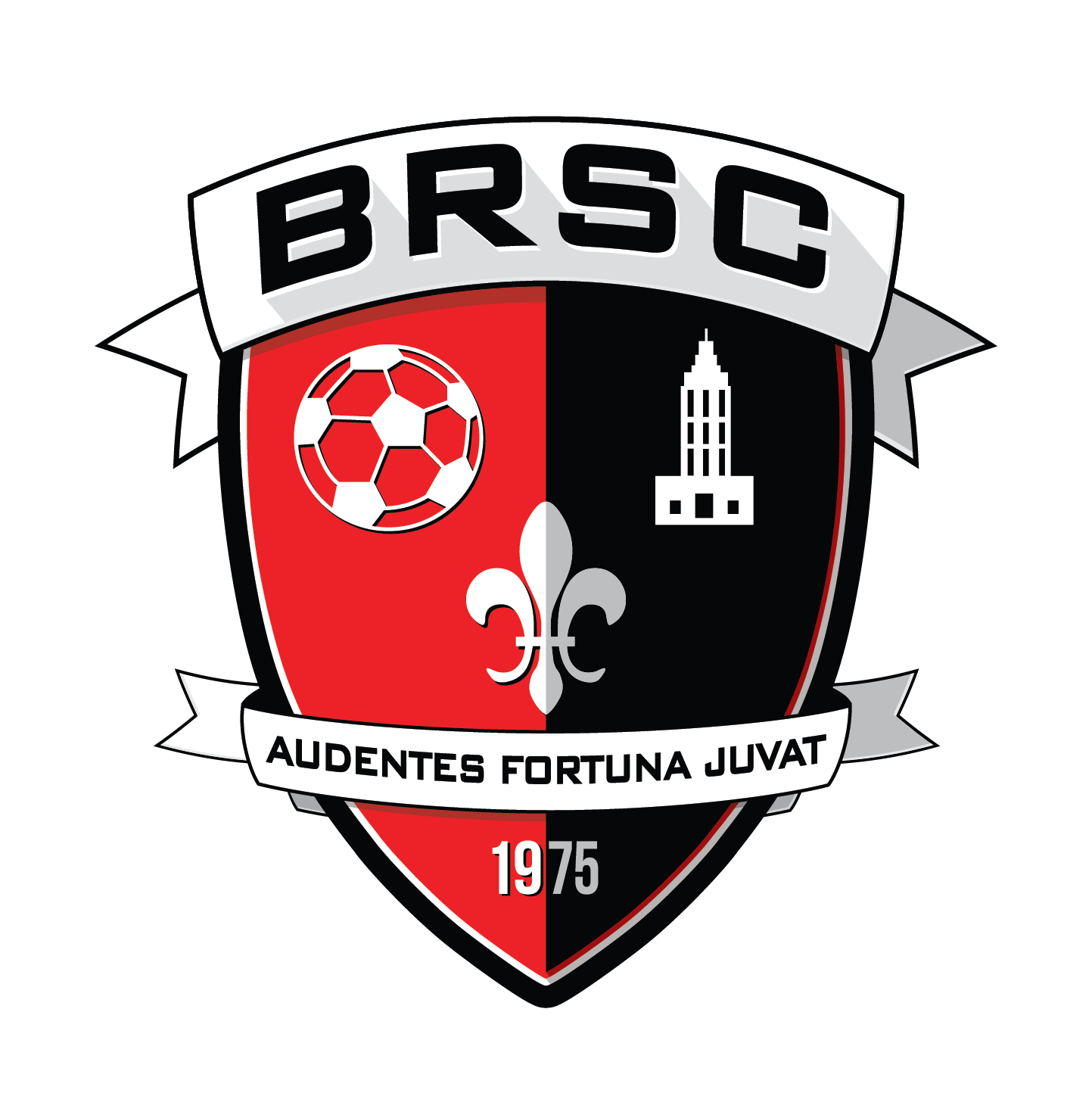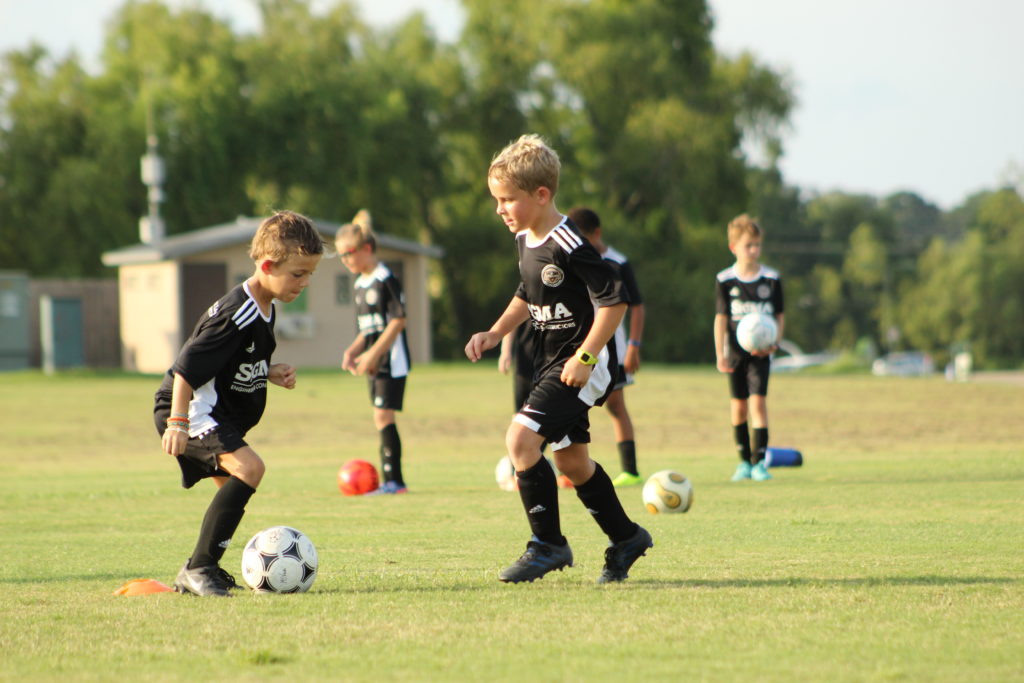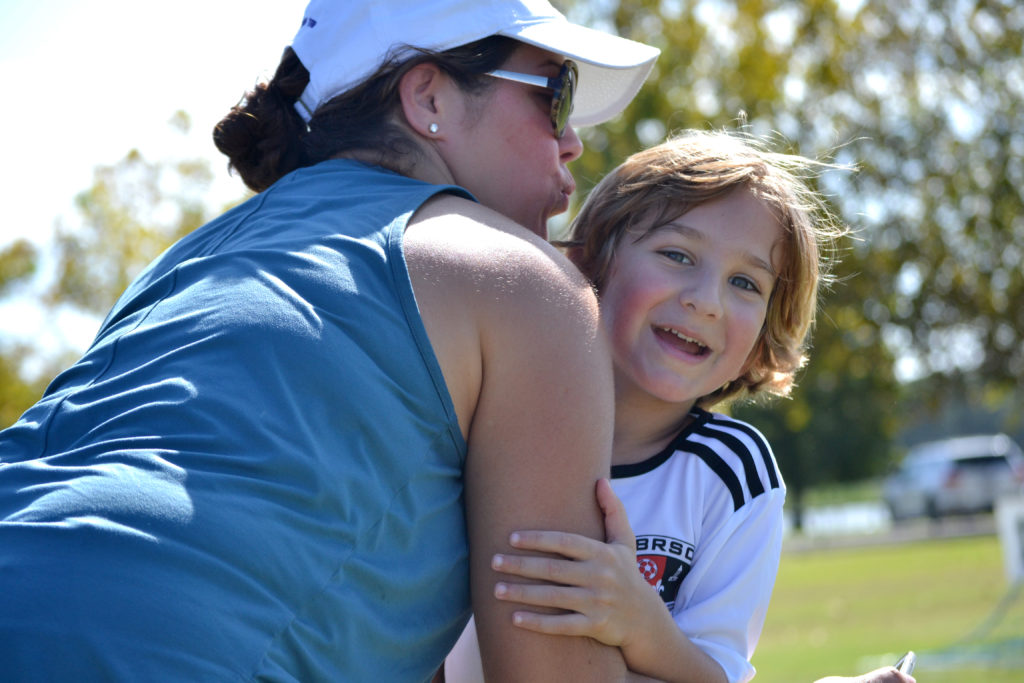Parent Education
Hydration Tips for Soccer Players
As we approach BRSC’s Competitive Team Camp and the new season, it is imperative for all players to hydrate before, during, and after training sessions. Hydration is crucial for soccer players, as dehydration can lead to a decline in performance, muscle cramps, fatigue, and even heat-related illnesses. We have compiled some helpful tips for hydrating effectively:
Before Training:
- Start hydrating well in advance. Drink plenty of fluids throughout the day leading up to your training session, aiming to consume around 2-3 liters (68-101 ounces) of water daily.
- Monitor your urine color. It should be pale yellow, which indicates proper hydration. Dark urine is a sign of dehydration.
- Consume a carbohydrate-focused meal 2-4 hours before training. This will help ensure you have adequate energy stores.
- Continue hydration with water or sports drink in the hour leading up to training.
During Training:
- Drink fluids before, during, and after training to maintain hydration levels. Aim to drink 5-9 ounces of water every 15-30 minutes during training sessions.
- For intense, prolonged workouts lasting more than an hour, consider consuming a sports drink containing electrolytes to replace sodium, potassium, and other minerals lost through sweat.
After Training:
- Replenish fluids within 30 minutes of completing your training session. Water, coconut water, or a sports drink can be good options.
- Consume a high carbohydrate snack within one hour of completing the training session to replenish glycogen stores. Some examples of this may be a recovery shake, yogurt, fruit, or cereal bar.
- Consume a well-balanced post-workout meal more than 2 hours following the completion of the training session that includes carbohydrates to replenish glycogen stores and protein to support muscle recovery.
- Monitor your body weight before and after training. For every kilogram lost during exercise, consume around 1.5 liters (50 ounces) of fluid to rehydrate. For every pound lost during exercise, consume around 24 ounces of fluid to rehydrate. There should not be more than a 1% difference in morning body weight day-to-day.
Additional Tips:
- Avoid excessive caffeine, as it can increase dehydration.
- Consider using a sports water bottle with measurements to track your fluid intake accurately.
- Incorporate hydrating foods into your diet, such as fruits, vegetables, and soups, which have high water content.
- Listen to your body and drink when you feel thirsty. Thirst is a reliable indicator of the body’s need for fluids.
Remember, proper hydration is an ongoing process. Following these guidelines will help you maintain optimal hydration levels and enhance your performance on the field. A registered dietitian or healthcare professional can provide recommendations customized to your concerns or medical conditions.
Consult our Sports Medicine Education Page for additional helpful tips and resources.
Thinking With Your Feet: How Soccer Replumbs Your Brain
Article by contributing author Naomi Cook
There’s no question that soccer can help kick-start your physical health. This sport involves actions like running, kicking, and heading the soccer ball. Still, you may wonder whether playing soccer can significantly affect a person’s brain.
According to the Fédération Internationale de Football Association (FIFA), the sports’ modern format dates back to England in 1863. Other experts believe soccer’s roots date back to a Chinese military manual in the 2nd and 3rd centuries, referring to a game known as Tsu’ Chu. Some research suggests that the sport may help rewire the brain in various ways. How does soccer rewire the brain? What brain regions does the global sport affect? How does soccer rewire the brain differently from other sports?
When soccer players experience head injuries, brain scans can help determine various regions for injury-related damage.
Soccer can also affect the brain’s functionality, even during normal play. Learn more about our brains when you read this article.
How Soccer Replumbs the Brain
Soccer isn’t just a game of “kicking the ball into the net.” The game also highlights the flexibility of the human brain. For example, soccer involves the function of the cerebral cortex. People sometimes refer to the cerebral cortex as “gray matter.” The gray matter is located in the brain’s outer layer contains various nerve cell bodies. The cerebral cortex is gray since it lacks a fatty-covering material known as “myelin.”
This brain region is the outermost layer of nerve cell tissue. It has several folds and grooves, giving it a wrinkled appearance. The cerebral cortex has a vital role in several brain functions, including:
● Thinking
● Memory
● Learning
● Reasoning
● Consciousness
● Emotions
● Problem-solving
Impact of the No-Hands Rule on the Brain One of soccer’s primary differences from many other sports that may help rewire the brain is its “no-hands” rule.
Sports like football, basketball, and baseball allow players to touch the ball with their hands. Meanwhile, in soccer, only the goalie can take that action. This rule eliminates the evolutionary skill of using hands, which humans have developed over thousands of years.
Consider the degrees of difficulty a person has to place their hand on a flat surface and lift their middle finger or middle toe. People often have difficulty lifting their middle toe. You can even experiment to see how challenging it is.
What makes this task so difficult for many people?
The difficulty is because there’s less of a connection between the brain that controls your feet compared to your hands.
Effects on the Cerebral Cortex
The brain’s expanded cortical regions and the hands’ fine motor control have produced incredible achievements in games as the hand plays a significant role in many sports.
Fine motor skills are an individual’s ability to use small muscles in the hands and wrists to make movements. Besides athletes’ fine motor skills, we also use them daily.
Soccer eliminates the usage of hands and focuses on the feet. A small region of the cortex represents the feet. So, this sport centers on the powerful human capacity of learning by experience. A soccer player’s training and experience reshape their brain. The brain regions related to the feet likely expand to increase the neural representation. Neurons are information messengers.
So the brains of some of the world’s top soccer players may differ significantly from average humans’ brains. A reshaped cerebral cortex in the brains of the best soccer players shows the outstanding flexibility of the human brain. This feature demonstrates the brain’s incredible ability to grow and learn from new experiences.
Impact of Generating Creative Plays on the Brain
Effects on Specific Brain Regions
A recent study in Human Brain Mapping examined soccer players’ patterns of brain activity during the formation of creative moves in decision-making situations. Researchers reported that obvious and creative soccer moves activated different brain regions. Researchers also hypothesized that performing obvious soccer moves activated a region on the left side of the brain.
More investigation is needed on how the different soccer moves activate various brain regions.
Applications for Teams and Players
In modern soccer, creative teams can have more success. In other words, such teams don’t necessarily need a longer ball possession during a game to win the competition. For example, soccer offenses can determine ways to “unlock” opposing
defenses. So, just as individual soccer players can use more creative plays during a game, teams can take a similar approach when aiming to score.
However, creative soccer players can also be effective. They can use strategies to get past a defender. Today’s defense formations in soccer can be quite complex. Still, they all have strengths and weaknesses.
So, if players use more complex strategies, this approach can help players get through defenses more easily and score more goals.
References
1. Brain and soccer: Functional patterns of brain activity during the generation of creative moves in real soccer decision-making situations
https://onlinelibrary.wiley.com/doi/full/10.1002/hbm.24408
2. Cerebral cortex
https://my.clevelandclinic.org/health/articles/23073-c
3. Brain basics: the life and death of a neuron
https://www.ninds.nih.gov/health-information/patient-caregiver-education/brain-basics-life-and-death-neuron
Parent Your Best on the Sidelines
As a parent, you love your kid, and you want nothing more than to see them succeed. Sometimes your love and good intentions are harming your child, the coach, the game officials, and other players on the field. As parents, you have one critical role once the game has started, clap for the players on the field.
As Reed Maltbie points out in his article, It’s Time to End the Sideline Sportsanity, “overzealous cheering can easily lead to coaching.” Often, parents don’t realize they’re coaching from the sidelines. Action words such as go, run, get the ball, and pass is all forms of coaching. Remember, your child has a coach. They want to see your child succeed as well and will work with them in games and practice to bring the best out of your child.
If you still find it hard to avoid coaching from the sideline, Maltbie has several excellent recommendations.
- Wear headphones – I coached a player whose dad always wore headphones. He said he was a once high level athlete and a former coach, so the urge to intervene was off the charts. He wore headphones to keep from “sideline coaching”. They also served a second purpose, he said, “I don’t have to listen to all the other parents”.
- Be the team photographer/videographer – You’ll be too busy finding the perfect shot of everyone’s kid to be yelling. You may even gain an appreciation for all the players on the team. If you film a game and hear your screams on the playback, you will probably never yell again.
- Carry lollipops – Sounds funny, but effective. If you feel the urge to speak your mind, fill that gaping void with something to keep words from coming out of it. I’ve heard of sports teams assigning ‘lollipop parents’ whose jobs are to hand out lollipops to those who yell.
- Sit in the corner – literally. The same dad who listened to music would also sit away from everyone in the corner of the field. He could watch the game but not get caught up by the emotions on the field and the even more intense emotions on the sidelines. I am convinced there is a direct correlation between how close you sit to the action and how much you need to intervene during games.
- Have a yell jar – Pass a jar at games. When you yell, you pay. Use the money to buy all the kids ice cream. You could alter the amounts based on the infraction: yelling instructions is a buck, yelling at the coach is two bucks, berating the ref is a 5 spot, screaming at the kids is a sawbuck.
- Offer to be the “keeper of the culture”. My wife played this role very well. She once dealt with a pair of new parents to our club. They were Sniper Parents yelling shoot at every touch of the ball and when the child would mess up, they would bellow “What were you thinking”. She finally marched up to them and asked them if they liked having people yell at them. She said “we don’t yell at 11 year-olds at our club. This is not our culture”. That became a theme for us- keep the culture. We actually had players come to tryouts to join the club that policed its sidelines. If you have strong club values – offer to guard them.




